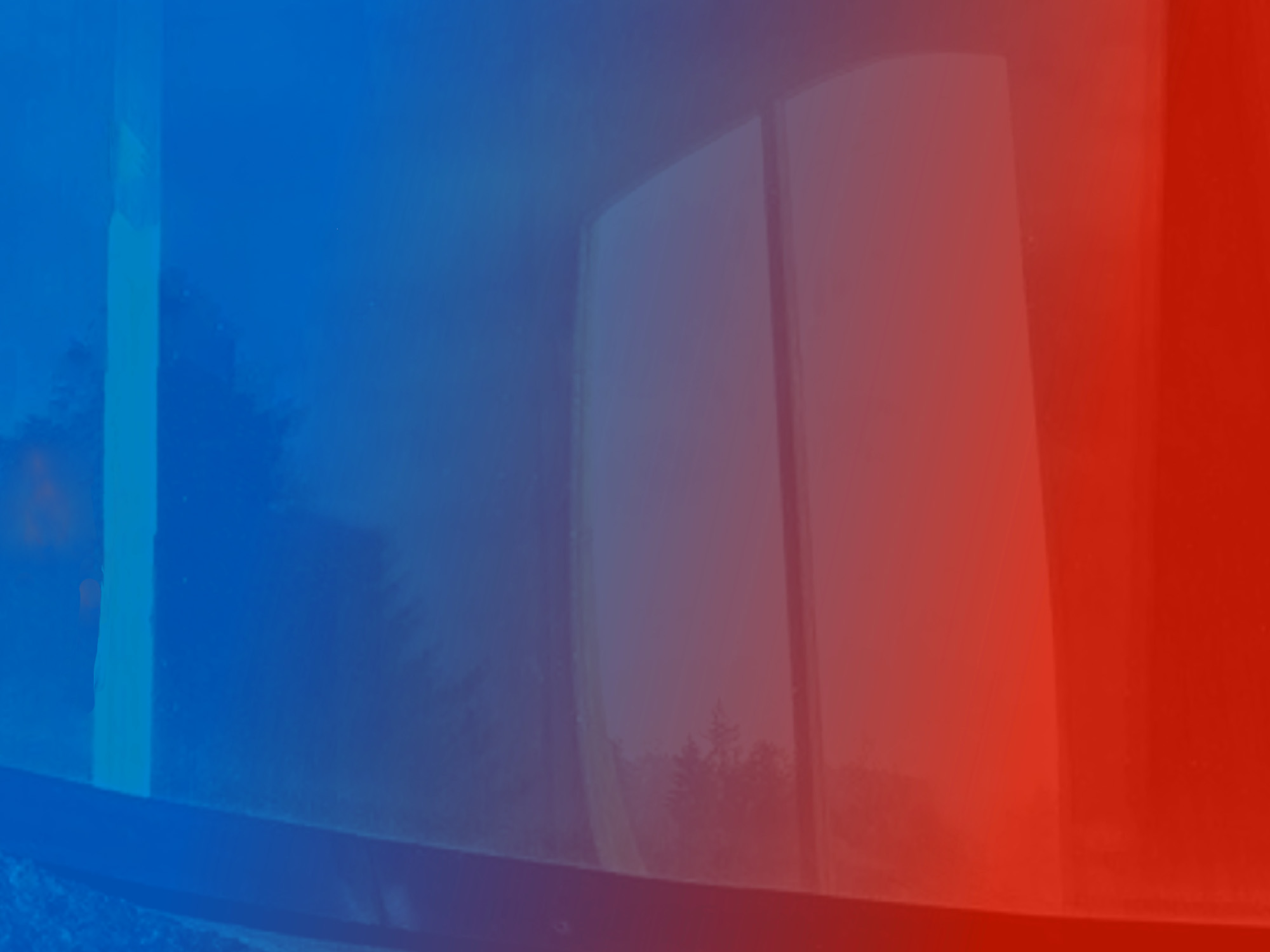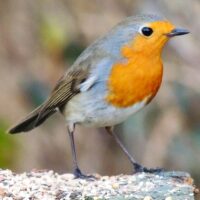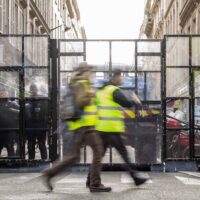After seven years, a Goetheanum World Conference will once again take place, at Michaelmas 2023. An invitation from Christiane Haid, Ueli Hurter, and Johannes Kronenberg.
The world has changed radically in these seven years. The health of the earth and of ourselves as human beings, world peace, and social questions, up to and including the effects of global digitalization, confront us unavoidably in new dimensions. In recent years, global events have focused our attention and broadened the horizon of our responsibilities. We are awakening to the greater world context—the extent to which we are interdependent and reliant upon one another at every level, worldwide, has become tangible in our very existence.
Against this backdrop, the new global consciousness is challenging on many levels: economically, politically, and socially, with regard to energy resources and the way we deal with the environment. It is a call for change and for participation. Anthroposophy is facing new tasks and developments. It is itself simultaneously entering a new phase of development after more than 100 years of existence.
With the World Conference, we are addressing the anthroposophical fields of work and the people working in them as a movement that is active worldwide, as a world movement, and are issuing an invitation to take stock of where we stand. We would like to work towards a more conscious shared picture of the task of anthroposophy in the face of the world situation and explore what the next steps are, in terms of contributing and participating in the challenges we face as a world community.
Awakening Through and With the World
With this working conference, we aim to make the anthroposophical world movement more aware of and awake to itself and its tasks. In doing so, we are guided by the following questions: How can the work with anthroposophy be renewed and strengthened in a rapidly changing world? After more than 100 years of its existence, what are the next steps? How can we carry the experiences, challenges and achievements of the anthroposophical movement, the Anthroposophical Society and the School of Spiritual Science into the future? How can we reshape the world movement that has emerged from anthroposophy?
Twelve Questions that Look into the World
During the mornings of the World Conference, inspired by impulses from the morning contributions, we want to work in twelve thematic forums, each of which will be organized in a transdisciplinary way by members of at least two sections of the School of Spiritual Science and experts from the fields of work. Over the course of three mornings, each forum of around 60 participants will outline steps for the next seven years.
Selections from the thematic fields:
1) We want to live on earth! What are our contributions to the future of the earth?
2) Health for people and the earth! How are human health and the health of the earth connected, and how can they be promoted?
3) Living with technology! What perspectives on transhumanism arise from anthroposophy?
4) Meditation! How do I move from meditative self-discovery to working with the sensory, social and spiritual world?
5) Follow the science! How can the primacy of science be transformed through artistic and social approaches?
6) Anthroposophy in the present! How can anthroposophy and Rudolf Steiner’s work be strengthened, supported and promoted in public and in anthroposophical settings?
7) The transformative powers of art! What contribution can art make to overcoming crisis?
These are topics and questions that our time poses to us and that we have identified and considered in conversation.
Between Scylla and Charybdis
The afternoons of the World Conference will explore anthroposophy’s relevance and impact in greater world contexts. Are we able to participate in shaping world culture? Does anthroposophical work tend to trickle away into niches and subcultures that lack a connection with wider society? Is anthroposophy a part of world culture or a subculture? The goal cannot be to close ourselves off from the world and create an insular existence in which one uniform direction and opinion is pursued. The goal is to form a movement that is open to the world, diverse and multifaceted, that takes responsibility for both the major and minor questions and tasks of our time and is capable of cooperation across a range of positions.
This has started to happen in many areas over the last 100 years, but there is a tendency to go to extremes. If institutions grow strongly, the situation can arise that anthroposophy as such fades into the background and the living impulse of the beginning disappears. There is thus a risk of dilution. How do we deal with this phenomenon? This concerns schools, special educational institutions, farms, foundations, and companies. It can similarly be observed that people and institutions rigidify into dogma and isolation and lose a living connection with their environment. This dynamic characterizes the other extreme. Thus, for example, government requirements or demands from stakeholder groups are thrown to the wind for years, until institutions are then compelled from the outside to close. Finding a healthy middle way between the two extreme positions is, as we have experienced in recent years, a great challenge for many organizations working out of anthroposophy.
What Inspires Us?
The inner theme for the work on the four days of the conference is the ‘Foundation Stone Meditation’ that Rudolf Steiner gave at Christmas 1923 as the foundation stone of the Anthroposophical Society. The following words, addressed directly to the human soul, are a source of inspiration for us and serve as motifs for the individual days of the conference: “Human soul! You live in the limbs”; “Human soul! You live in the beat of heart and lung”; “Human soul! You live in the resting head”; “That good may become, what from our hearts we found, and from our heads we direct with single purpose”. We will apprehend these motifs through eurythmy demonstrations that guide us into the dimensions of the threefold human being and connect them with the daily theme: 1) Earth—the desire to incarnate, 2) Plurality—working together in diversity, 3) Cognition and art, and 4) “That good may become!”
For us, art is an essential aspect of experience and therefore plays a central role during the World Conference. The large hand-woven tapestry ‘Guernica de la Ecologia’ by Dutch artist Claudy Jongstra will be on display. Inspired by Picasso’s ‘Guernica’ painting, it addresses the theme of the destruction of the environment. An exhibition by iron sculptor Ferose, sculptor Peter Goehlen and painter Stephane Zwahlen will also be on display during the conference. The encounter between Ferose’s sculptures welded from iron wires and Stephane Zwahlen’s dynamic color designs unfolds a dialogue between sculpture and painting. During the evenings, we will see and hear eurythmy, speech, and music from different countries around the world: the Goetheanum Eurythmy Ensemble, the Ha’Mila Theatre from Israel, the New Orchestra Basel, and the Spring Valley Eurythmy Ensemble from the USA will give us a variety of views into the world of art.
In addition there will be interaction in world cafés, workshops, art groups, exhibitions, a market and guided tours. The most important content of the conference will be translated into German, English, Spanish, French, Italian, Portuguese, Russian, and Chinese.
Whence Do We Come, Whither Do We Go?
The conference has been in preparation for almost two years. The preparatory group consists of Christiane Haid, Katharina Hoffmann, Ueli Hurter, Constanza Kaliks, Johannes Kronenberg, Clara von Recklinghausen, and Andrea Valdinoci, in collaboration with various teams at the Goetheanum. In September 2022 we sent out an open call for contributions. In addition there were round tables in which the world movement and the eleven sections of the Goetheanum participated in shaping the content. Hundreds of responses from the impulses and suggestions sent to us and from our discussions, led to the present program with the topics listed. Not every proposal could be accepted, but the topology of the conference in terms of content was shaped from all over the world.
One difference, compared to 2016, is that this world conference is open to everyone interested and so it was not announced solely via personal invitations. We tried to meet all the different demands in the design of the program. Our hope is that, in these days of Michaelmas, we can together feel our way into the future of the anthroposophical world movement.
What Are the Next Steps?
Now the question remains: how can all these encounters and all this content continue to be supported and lived out after the conference, because we want to consider another seven-year horizon. Conference goals, in the sense of directions of work, are therefore to be formulated for the subject areas of the thematic forums. Concrete projects and plans may, where possible, arise from them.
We are looking forward to meeting everyone at Michaelmas and warmly invite all those who feel themselves addressed to join in and participate. In addition, we would like to ask you, reading this, to help draw the attention of people in your circles and fields of work to the World Conference and to inform them about it.
Perhaps you know someone whom you would like to enable to participate? We have already heard from people who cannot come themselves but are happy to make a financial contribution to make this possible for others, for example, younger people or people from a country where the economic situation makes it difficult or impossible to undertake the journey to Dornach. You can donate using the details below.
For registration, the program and more information Goetheanum World Conference
For donations Donation WK 23
Translation Christian von Arnim





